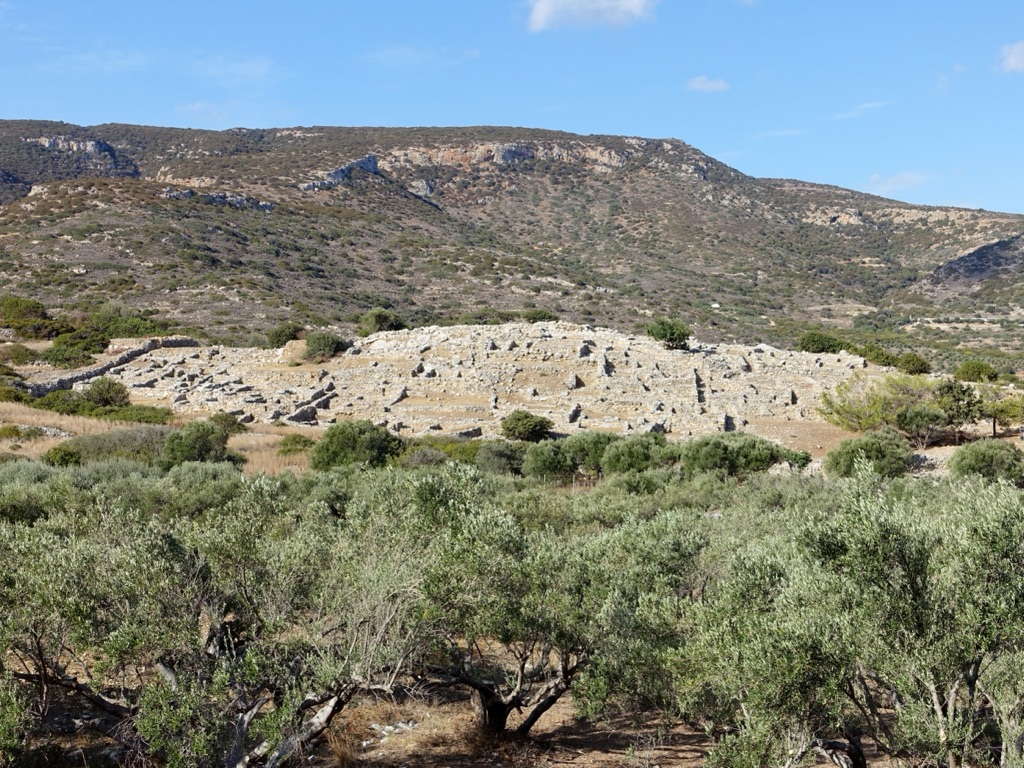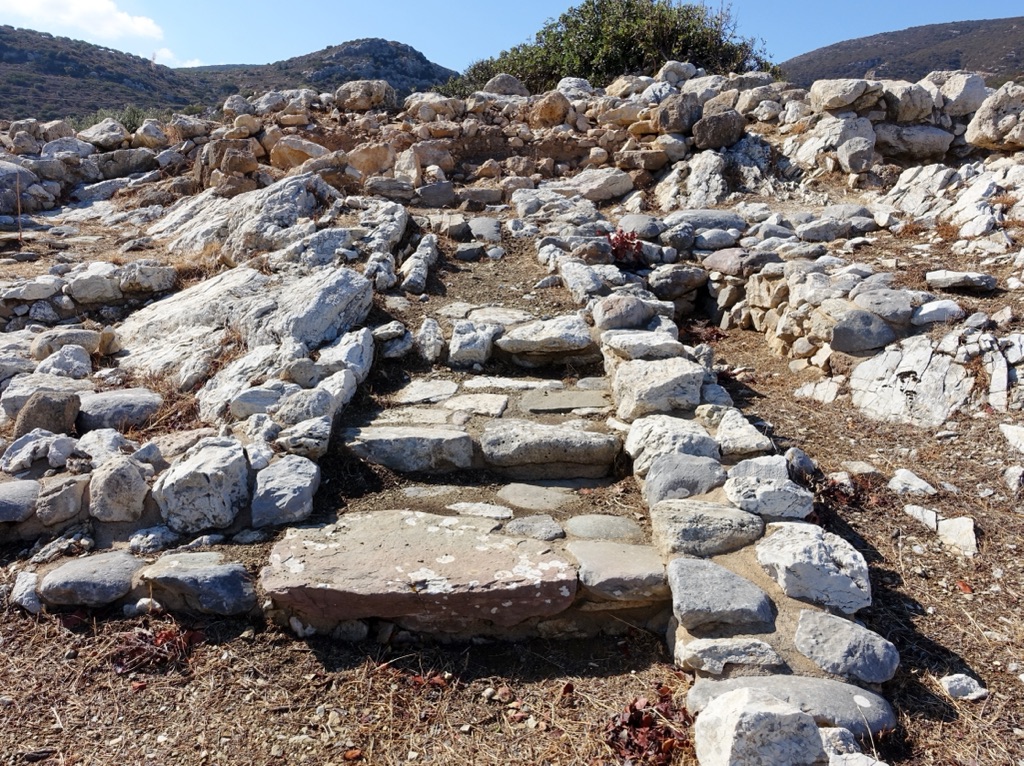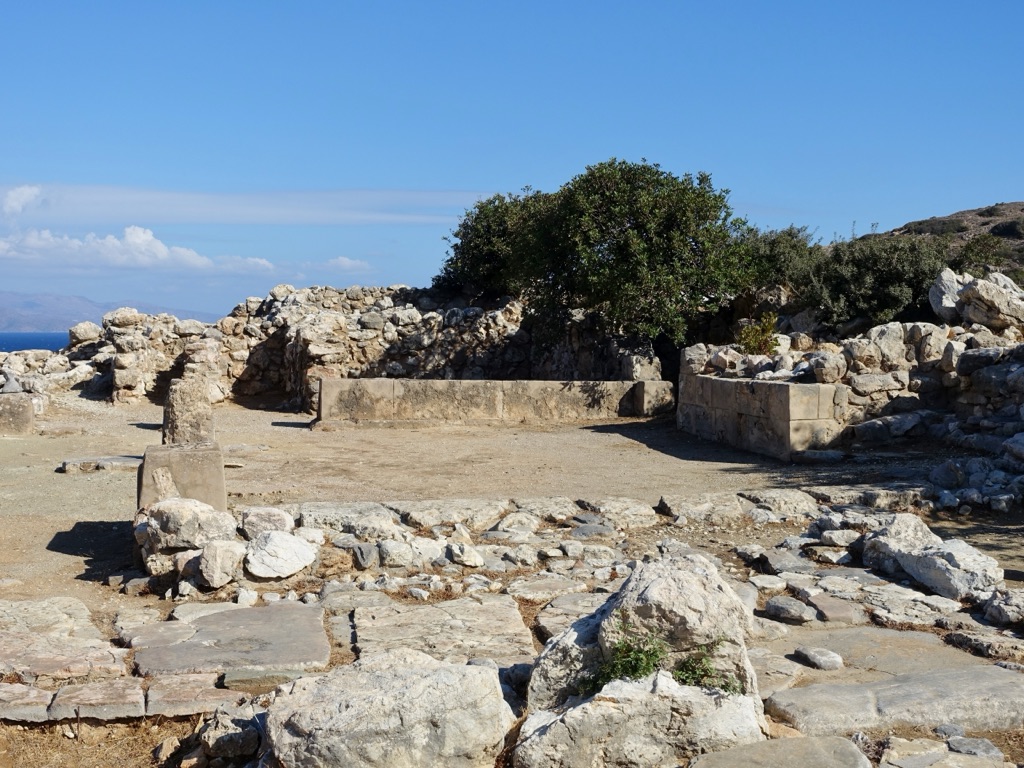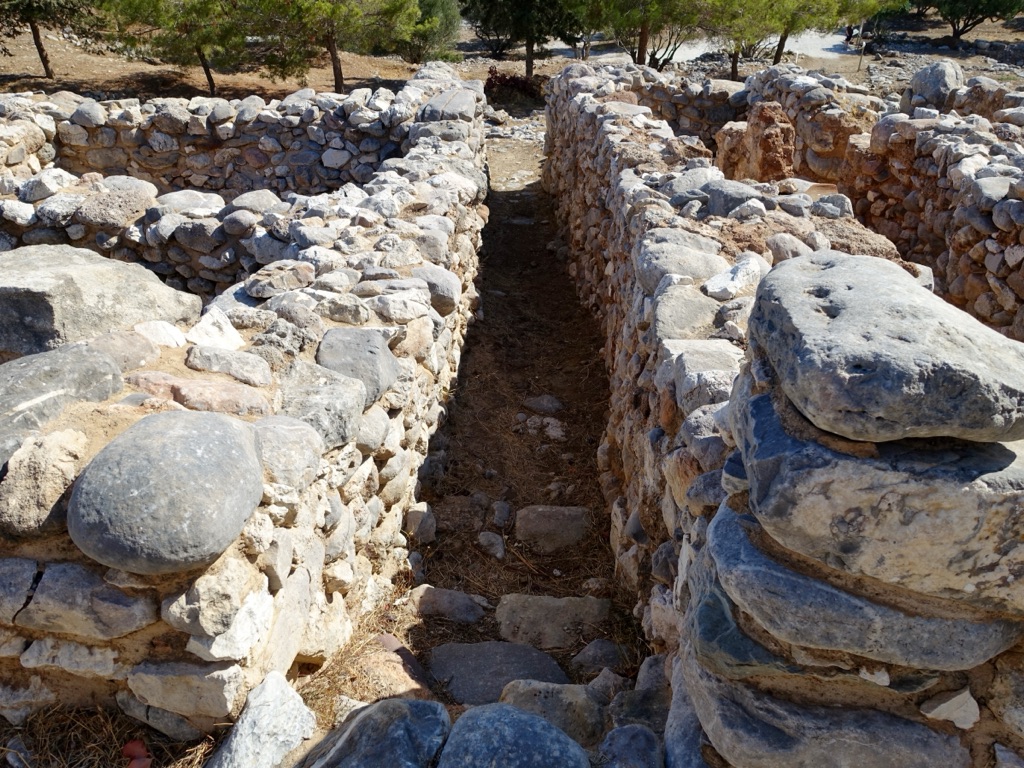The Archaeological Site of Gournia is a testament to the Minoan civilization that flourished on Crete. This well-preserved town offers a glimpse into the Bronze Age, showcasing urban planning, architecture, and artifacts from around 1550 to 1450 BC. Gournia’s discovery has provided invaluable insights into Minoan society, economy, and daily life.
Get your dose of History via Email
Historical Background of Archaeological Site of Gournia
Gournia, unearthed in 1901 by American archaeologist Harriet Boyd Hawes, is a jewel of Minoan archaeology. The site dates back to the Minoan period, with its prime around 1550-1450 BC. It’s believed that the Minoans, an advanced Bronze Age civilization, built this town. Over time, Gournia saw various inhabitants, including Mycenaeans post the Minoan era. While not the scene of famous historical events, Gournia’s everyday life provides a rich historical narrative.
The town’s layout, with its small houses, central courtyard, and complex infrastructure, suggests a well-organized society. The Minoans were known for their trade and craftsmanship, which Gournia reflects. Artifacts found here, such as pottery and tools, indicate a community engaged in daily commerce and production. The site also includes a palace, indicating some form of centralized authority.
After the fall of the Minoan civilization, Gournia was not immediately abandoned. The Mycenaeans took over the site, leaving their own cultural imprint. This transition period is crucial for understanding the shift in power and culture in ancient Greece. Gournia’s strategic location for maritime trade made it an important site throughout its history.

Despite its significance, Gournia was not immune to the turmoil of the ancient world. The town was eventually abandoned, and its ruins lay untouched for centuries. The reasons for its decline are still a subject of study, with theories ranging from natural disasters to socio-political changes. The site’s excavation has been pivotal in piecing together the puzzle of its past.
Today, Gournia stands as a silent witness to the Minoan civilization’s achievements. Its discovery has allowed historians and archaeologists to reconstruct aspects of Minoan life. The site continues to be an important focus for research, offering new findings that challenge and enrich our understanding of the ancient world.
About Archaeological Site of Gournia
The Archaeological Site of Gournia is a marvel of Minoan urban planning. The town’s remains include a palace, houses, and a network of streets. The buildings were constructed with local stone, and the architectural highlights include well-crafted masonry and multi-story structures. The town’s design reflects a sophisticated understanding of urban living.
The palace at Gournia, although smaller than other Minoan palaces like Knossos, is significant. It features storerooms, workshops, and a central court. The construction methods used were advanced for the time, with careful attention to detail evident in the stonework. The palace’s role was likely administrative and ceremonial, serving as the town’s focal point.

Houses in Gournia were typically two stories high, with ground floors used for daily activities and upper floors for living quarters. The use of wood and mud bricks complemented the stone foundations. Some houses had stone-paved floors, and several featured small shrines, indicating religious practices within the home.
The town’s infrastructure included a drainage system, evidence of the Minoans’ engineering skills. Roads and pathways connected the various parts of the town, facilitating movement and trade. The layout of Gournia suggests a society that valued organization and community cohesion.
Artifacts found at Gournia, such as pottery, stone vessels, and metal tools, provide insight into the materials used by the Minoans. These items not only served practical purposes but also held aesthetic value, showcasing the Minoans’ artistry. The construction and artifacts together paint a picture of a society that was both functional and culturally rich.
Theories and Interpretations
The Archaeological Site of Gournia has sparked various theories about Minoan life. The town’s layout suggests a society with a degree of social stratification, as seen in the palace’s prominence. Some scholars theorize that Gournia was a hub for regional trade, given its strategic coastal location.

The purpose of certain buildings and artifacts has led to interpretations based on historical records and comparisons with other Minoan sites. For example, the presence of lustral basins, often associated with ritual purification, hints at religious practices. However, the exact nature of Minoan worship remains partly mysterious.
Mysteries also surround the end of Gournia. While natural disasters like earthquakes are a common theory, there’s also speculation about societal upheaval. The transition from Minoan to Mycenaean control is another area of interpretation, with evidence suggesting a gradual cultural assimilation rather than a sudden takeover.
Dating of the site has been carried out using various methods, including pottery typology and radiocarbon dating. These techniques have helped establish a timeline for Gournia’s occupation and decline. However, the precision of these dates is subject to ongoing research and debate.
Theories about Gournia continue to evolve as new discoveries are made. Each finding adds a piece to the puzzle, offering a more nuanced understanding of the Minoan civilization. The interpretations of Gournia’s purpose and history are a testament to the complexity of unraveling the past.

At a glance
Country: Greece
Civilization: Minoan
Age: Approximately 3600 years old (1550-1450 BC)
Conclusion and Sources
The information in this article was sourced from reputable institutions and publications. These sources provide a solid foundation for understanding the Archaeological Site of Gournia and its significance.

